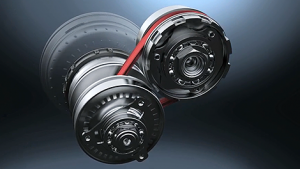Here’s the latest reader question, along with my reply!
Mike asks: I have an 2018 Subaru Forester with CVT transmission. At my 28,000 mileage dealer service they said they have to change the transmission fluid every 30,000 miles even though the maintenance manual never said to change it only inspect. Is their something wrong with this transmission. Are CVT transmission any good?
My reply: The usual rule here as regards service/service intervals is to abide by what the manufacturer – not the dealer – specifies. This information should be listed in your owner’s manual paperwork.
Dealerships make most of their money from selling service work – not selling cars. It is not uncommon for them to recommend more (and sooner) service than the car requires according to the manufacturer.
Sometimes, it can be a good idea to perform a given service sooner/more often than the manufacturer specifies but I’d want to know why it’s a good idea before agreeing to the work.
Now, here’s what I found out specifically as regards your 2018 Forester:
The manufacturer – Subaru – says the fluid should be checked every 30,000 miles. Not replaced. The fluid is considered lifetime, with no specified changeout interval at all.
This is pretty common with modern automatics generally.
But – and here’s where it gets confusing because it’s in between what the manufacturer recommends and the dealership is trying to sell you – I would personally consider changing the fluid at some point if it were my car’s transmission.
Just not every 30,000 miles.
That’s excessive.
Like changing oil – in a modern car – every 3,000 miles. The transmission fluid shouldn’t be “bad” (i.e., excessively dirty; additives depleted) so soon. It isn’t 1969. But transmission fluid also doesn’t last a lifetime – if you define that as the life of the car, which can and ought to be 15-20 years and at least 200,000 miles.
If you never change the fluid, the transmission is more likely to fail before the car itself falls apart – and replacing a transmission is a big expense.
Accordingly, I would check the fluid every 30,000 miles – and consider replacing it every 60,000 miles or so.
Waiting much longer is probably asking for trouble; doing it much sooner is probably an unnecessary expense.
I like to do this checking myself as you can tell a lot by looking at the fluid that comes out of the transmission – or what’s on the dipstick (obnoxiously, many modern cars no longer have them, making this formerly easy check difficult; you have to get underneath the car and find the fill plug and remove it to get a sample).
If the fluid is still more or less the same color it’s supposed to be (e.g., bright red or blue; the color depends on the type of fluid – be sure to always use exactly the specified fluid for your particular transmission) it is probably still good. If it is not the same color – if it is brown or black, for instance – it indicates a problem.
There may also be a filter that needs to be changed, too. If it gets clogged, the fluid will bypass filtration and that is bad news for your transmission and – ultimately – you.
It’s a shame both the manufacturer and the dealer aren’t more honest. The manufacturer touts “lifetime” service intervals to make it seem the cars they sell are essentially maintenance-free forever.. This is nonsense. Things like spark plugs, engine coolant and transmission fluid do last much longer than they used to. But they do not last the lifetime of the car.
Which is often defined (read the small print) as 100,000 miles. This is roughly half the realistic lifetime of a modern car. Which is a good thing, given the high cost of modern cars. The only way to amortize this cost is to drive the car for as long as possible. Ideally at least 12-15 years (if not 20) and 200,000-plus miles.
But you probably won’t get that far without a major expense if you leave those “lifetime” spark plugs, coolant and transmission fluid untouched for the lifetime of your car.
Sadly, there is no hard and fast rule as far as when, exactly, it is prudent to change out some of these parts/fluids. But a good way to rule-of-thumb it is to have a look at the severe or heavy duty service recommendations – as opposed to normal use – and adjust your service schedule in line with that.
As far as CVTs in general: These transmission are now very common because they increase fuel economy slightly (about 3 MPG overall is typical vs. the same car with a conventional automatic). The CVT isn’t conventional because it doesn’t shift up and down from gear to gear. It varies ranges. The idea is to keep the car in exactly the right range for any given road speed/load on the engine, in order to maximize fuel efficiency. A conventional automatic shifts up – or down – to maintain the right relationship but it’s not exact – which is why it shifts up and down to get as close as possible.
Early CVTs were, however, less reliable – which is understandable as the technology is new while conventional automatics have been around since the ’50s. CVTs do have their weak points, however – which is why it is a good idea to check the fluid at 30,000 miles (if it has a dipstick, I’d check it much more often than that) and to consider replacing it – but only if it needs it.
And it probably won’t before 60,000 miles or so.
. . .
Got a question about cars, Libertarian politics – or anything else? Click on the “ask Eric” link and send ’em in!
If you like what you’ve found here please consider supporting EPautos.
We depend on you to keep the wheels turning!
Our donate button is here.
If you prefer not to use PayPal, our mailing address is:
EPautos
721 Hummingbird Lane SE
Copper Hill, VA 24079
PS: Get an EPautos magnet or sticker or coaster in return for a $20 or more one-time donation or a $10 or more monthly recurring donation. (Please be sure to tell us you want a magnet or sticker or coaster – and also, provide an address, so we know where to mail the thing!)
If you’d like an ear tag – custom made! – just ask and it will be delivered.
My latest eBook is also available for your favorite price – free! Click here. If that fails, email me at EPeters952@yahoo.com and I will send you a copy directly!











Eric,
Why were CVTs unreliable when first introduced to cars? The technology is far from new; they’ve been around for a while. Motorscooters use CVTs; I know, because my Honda Helix and Suzuki Burgman both used CVTs. The Helix first came out in 1986, so CVTs have been around at least that long. The CVTs in cars are merely bigger, heavier versions of what my scooters used. So why did a mature technology have problems when first used in cars?
Furthermore, I don’t get why the car makers made a big deal of ’em. It’s no different than when turbocharging, fuel injection and anti-lock brakes first came out. They were all used in aircraft DECADES before they were used in cars! Ah, but when fuel injection and anti-lock brakes first came out, the car makers made a big deal about ’em-even though they’d been used in aircraft decades before they were in cars.
Hi Mark,
It’s a good question – in re the teething problems of early CVTs. It may have to do with cheap design or that in automotive applications, problems arose that weren’t foreseen. CVTs seem to have gotten more reliable over the past ten years.
As far as making a big deal: It’s lemons – and lemonaid. The car companies would probably have never adopted CVTs to the extent they have absent CAFE pressure. But they had to, so why not tout a necessity as a design advantage?
They’ve been used in cars for quite some time. DAF introduced the Variomatic CVT in the 1958 DAF 600. The Variomatic would move the car the same speed both forward and reverse. I don’t know about reliability, but rubber belts were used which probably needed periodic replacement.
https://www.youtube.com/watch?v=aauRlIuPpSo
The jatco cvt nissan used in older models had a metal push belt for the extra torque required to move a car. They were an unreliable pos. Snowmobiles, scooters, gokarts etc use a rubber belt. I think toyota uses aisin transmissions and haven’t suffered the same fate as nissans and subarus with cvt.
IMHO, the problem is JATCO, not so much CVTs in general, though CVT’s do tend to be harder on their ATF than planetary/clutch-band auto slushboxes. JATCO’s planetary/clutch autoboxes give trouble, more so than say an Aisin in a Toyota. Had a 5-speed JATCO box in a VW, it had 2 full rebuilds over its life, the second due to its poor forward clutch servo design IMHO.
Does anyone else build CVTs?
From what I’ve read, Toyota, Honda, and Subaru all build their own CVTs.